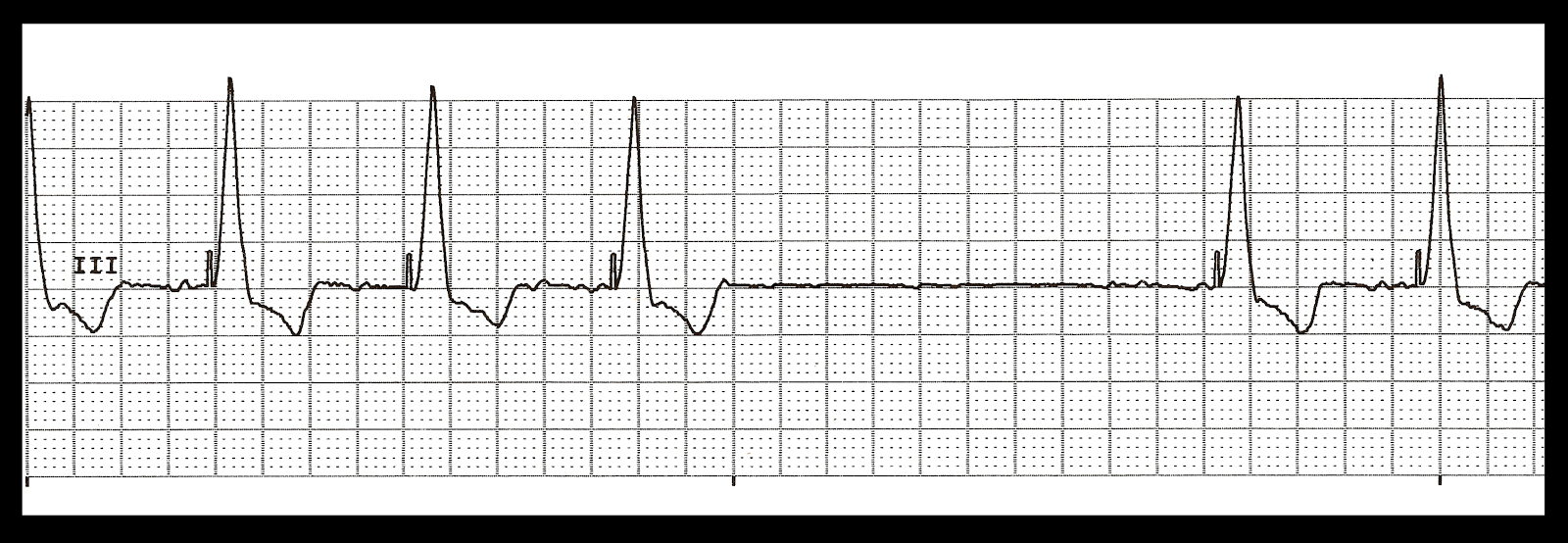
This is a patient with a normally-functioning DDD pacemaker: If no native beat is sensed after a set time interval, the pacemaker delivers a triggered beat. If a native beat is sensed, the pacemaker is inhibited. The most common setting for dual-chamber devices is DDD, wherein the pacemaker paces and senses both the atrium and the ventricle. These can be remembered by the mnemonic PaSeR 1 – pacing function, sensing position, and response to sensing. Pacemakers are fully described by a 5-position code, with the first 3 positions defining the function of the device. These features are programmable and affect battery longevity. The stimulation threshold is the minimum amount of energy required to depolarize myocardium, described by amplitude (volts) and duration. Pacing occurs when a potential difference (voltage) is applied between two electrodes.Fracture of the leads or breakdown of the insulated coating may lead to improper pacing/sensing functionality. Lastly, biventricular (resynchronization) pacemakers place leads in the right atrium, right ventricle, and coronary sinus (which paces the left ventricle).

Dual-chamber pacemakers have leads in the right atrium and right ventricle. Leads are placed in the right ventricle for single chamber pacemakers.
#VENTRICULAR PACED FAILURE TO CAPTURE GENERATOR#
Pacemaker leads connect the pulse generator to the myocardium.Timely replacement requires appropriate follow-up.

Battery life depends on how frequently the pacemaker senses and paces, making accurate prediction of its duration difficult. Most pacemakers have a battery life of 5-10 years. It is implanted in the soft tissues or muscles of the anterior chest wall.

Pacemakers are comprised of multiple components: He is able to state that, due to insurance issues, he has been unable to arrange an appointment with a cardiologist for the last 3 years. The patient you see before you is well-appearing and answering questions appropriately. His triage vitals are T 37.2C, HR 38, BP 118/78, RR 18, and O2 Sat 96% on room air. For a deeper dive on ECGs, we will include links to other great ECG FOAMed!Ī 76-year-old male with HTN, DM, CAD, and 3rd degree heart block status post pacemaker placement 8 years ago presents to your ED with dyspnea on exertion and an episode of syncope earlier today.
#VENTRICULAR PACED FAILURE TO CAPTURE SERIES#
Welcome to this edition of ECG Pointers, an emDOCs series designed to give you high yield tips about ECGs to keep your interpretation skills sharp. Author: David Bussé, MD, MBA (EM Resident Physician, UTSW / Parkland Memorial Hospital) // Edited by: Jamie Santistevan, MD ( jamie_rae_EMdoc – EM Physician, Presbyterian Hospital, Albuquerque, NM) Manpreet Singh, MD ( Assistant Professor of Emergency Medicine / Department of Emergency Medicine – Harbor-UCLA Medical Center) and Brit Long, MD ( long_brit – EM Attending Physician, San Antonio, TX)


 0 kommentar(er)
0 kommentar(er)
